Rwanda Flag Meaning
A tricolor of blue, yellow, and green bands with a golden sun in the upper fly corner. Adopted in 2001, the flag symbolizes unity, hope, and a new era of peace following the 1994 genocide.
- Continent
- Africa
- Adopted
- 2001
- Ratio
- 2:3
- Colors
- blue, yellow, green
- Designer
- Alphonse Kirimobenecyo
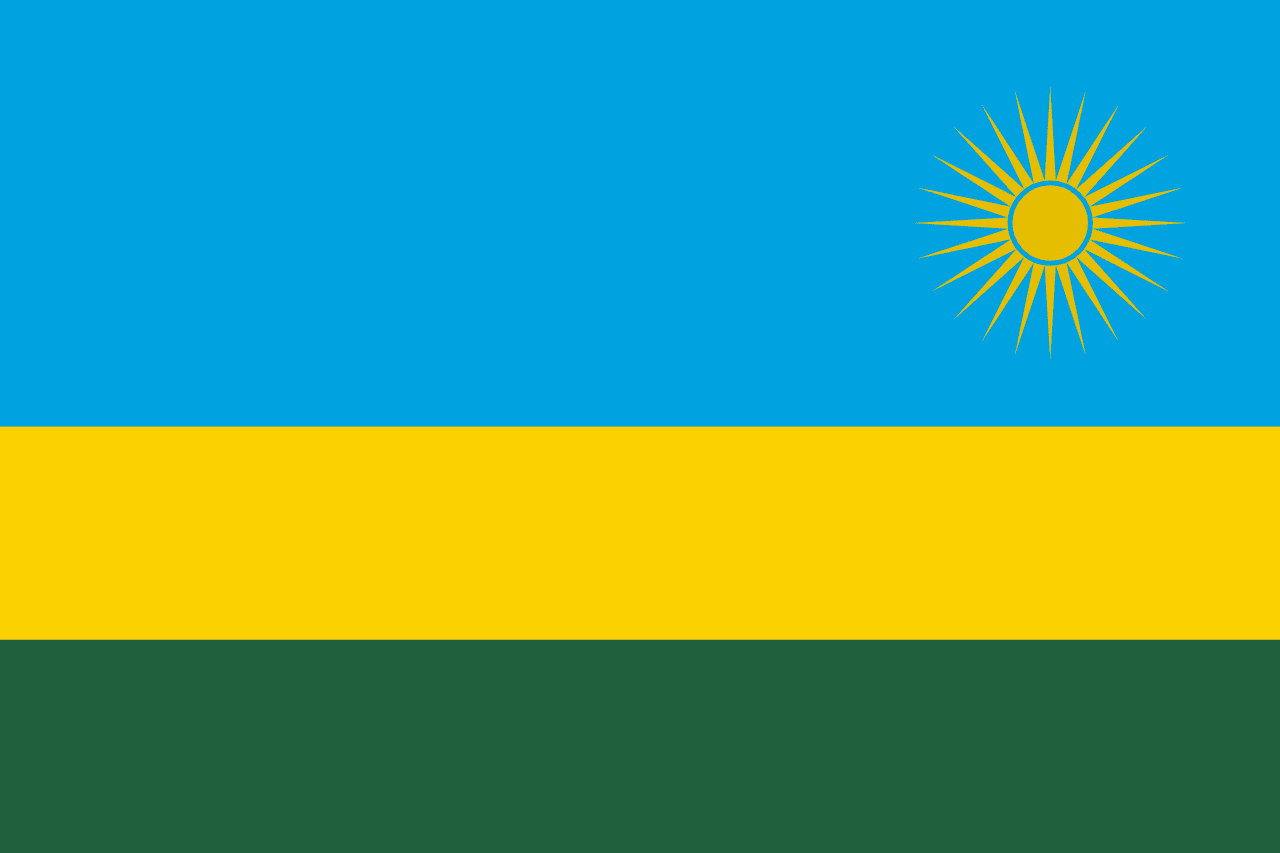
Symbolism
Blue Band: Represents happiness, peace, and the nation’s hope for prosperity.
Yellow Band: Symbolizes economic development and the country’s natural resources.
Green Band: Represents natural wealth, agriculture, and the hope of prosperity.
Golden Sun: Represents enlightenment, unity, and the fight against ignorance.
History
- Pre-Colonial Era: Rwanda developed as a centralized monarchy under the Tutsi kings (Mwami), with complex social structures.
- 1890s: Became part of German East Africa, later administered by Belgium after World War I.
- 1962: Independence from Belgium was achieved, adopting a red-yellow-green flag with an R in the center.
- 1994: The genocide against the Tutsi killed around 800,000 people in 100 days, devastating the nation.
- 2001: A new flag was adopted to promote unity and break with the divisive past.
Trivia
- Rwanda is known as the 'Land of a Thousand Hills' due to its mountainous landscape.
- The new flag was adopted specifically to distance the nation from the flag associated with the genocide era.
- Kigali, the capital, is considered one of Africa’s cleanest cities.
- Rwanda is one of the most densely populated countries in Africa.
- The golden sun on the flag represents enlightenment and hope for a bright future.
Related Countries
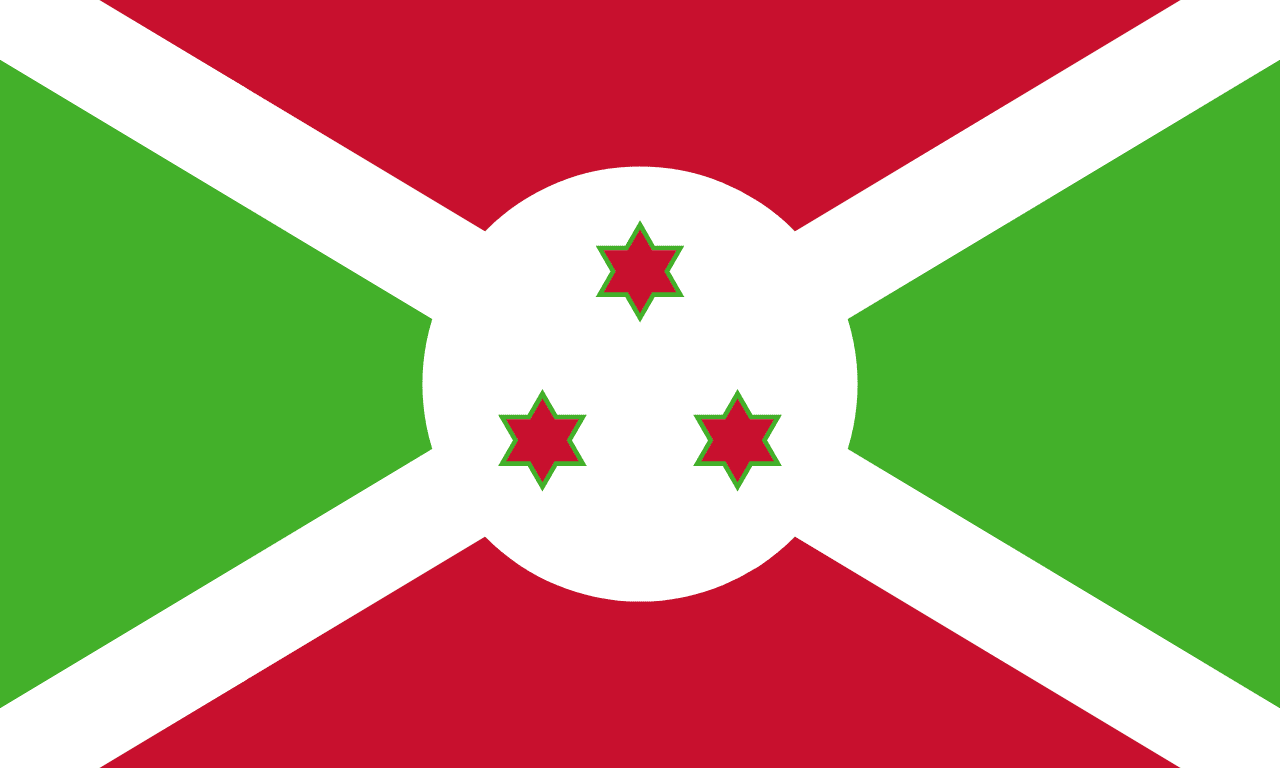
Burundi
Africa
A white diagonal cross dividing the flag into alternating red and green triangles, with three red stars outlined in green in the center circle, representing unity, work, progress, and the three ethnic groups of Burundi.
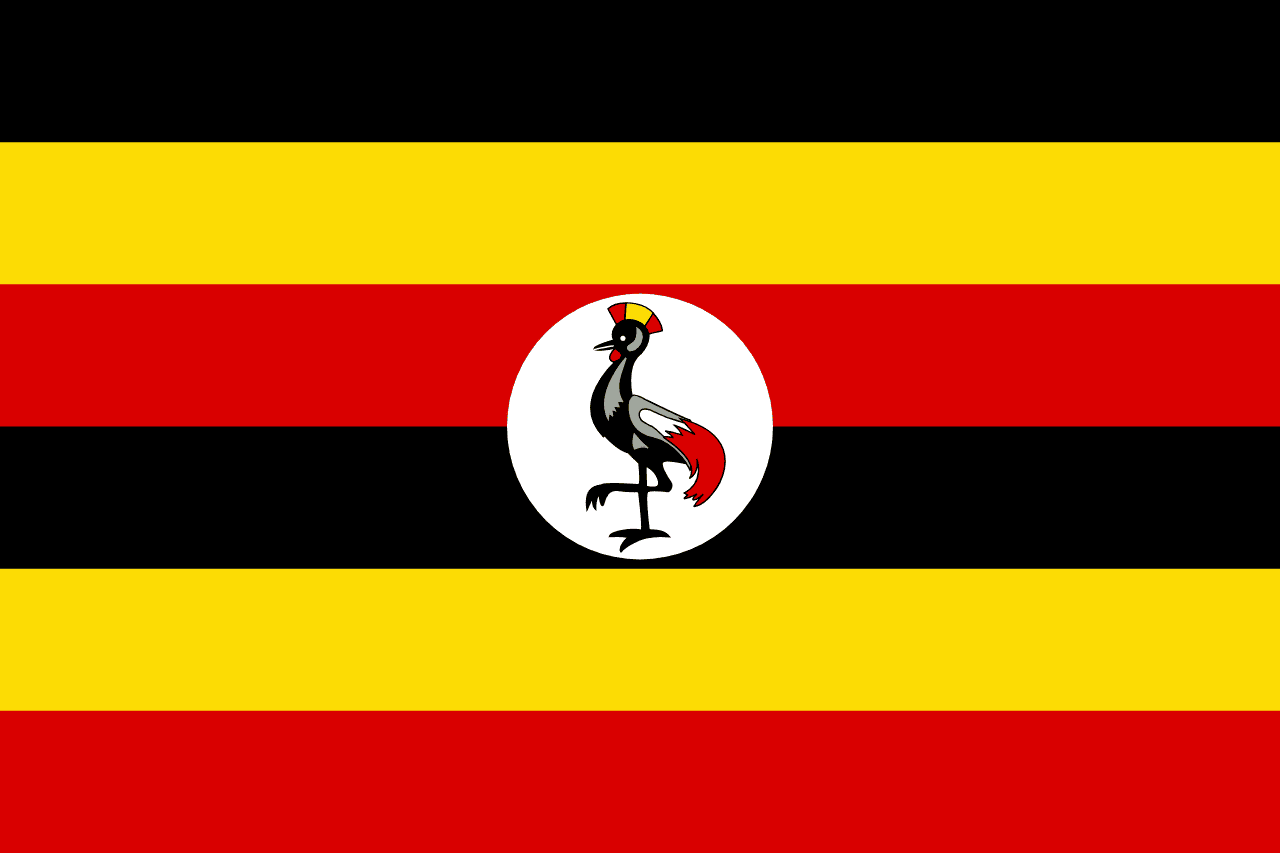
Uganda
Africa
Six horizontal stripes alternating black, yellow, and red (repeated twice) with a white circle containing the grey crowned crane in the center, representing the African people, sunshine and prosperity, brotherhood and unity, and the national bird that symbolizes Uganda's forward movement.
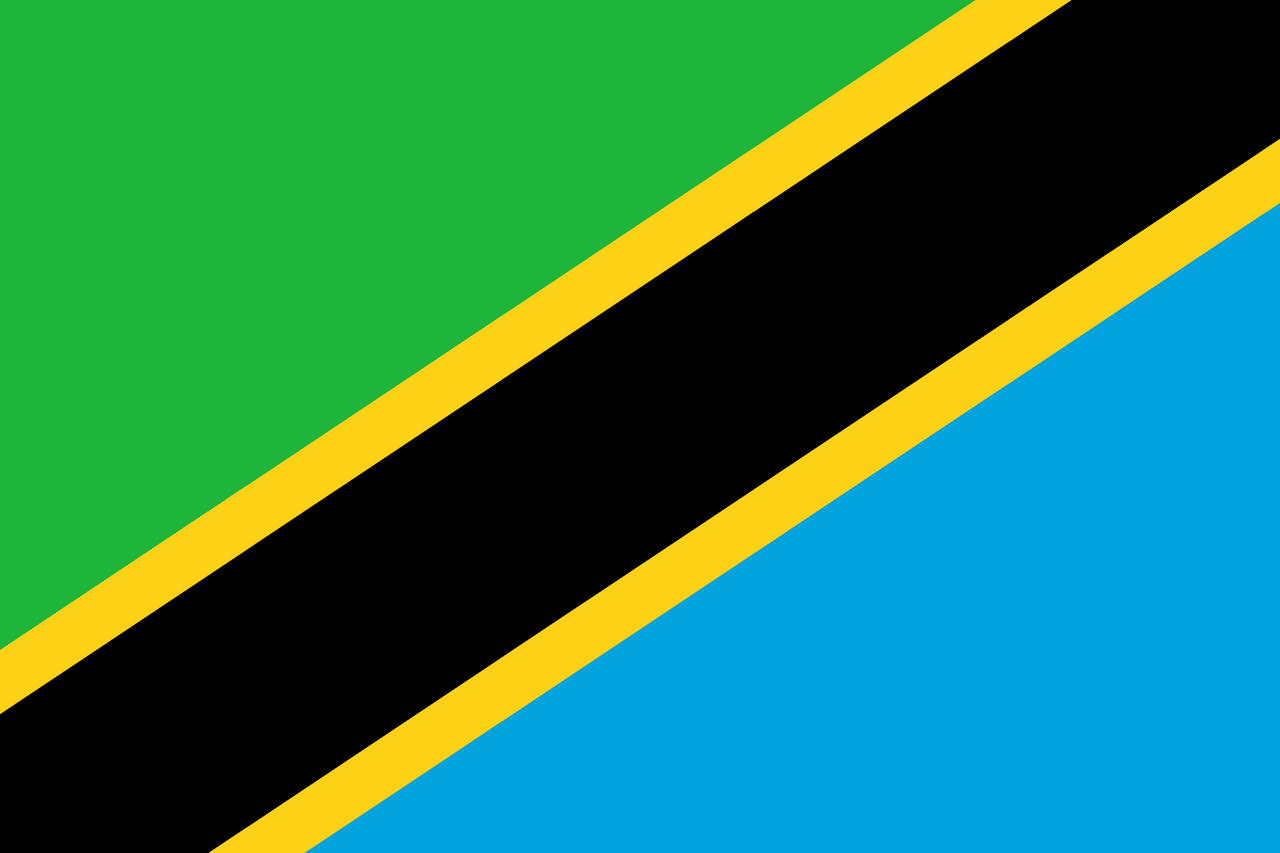
Tanzania
Africa
A green triangle in the upper hoist, a blue triangle in the lower fly, separated by a diagonal black stripe bordered by yellow stripes, representing the country's agriculture and forests, mineral wealth, the African people, and the Indian Ocean, symbolizing the union of Tanganyika and Zanzibar.
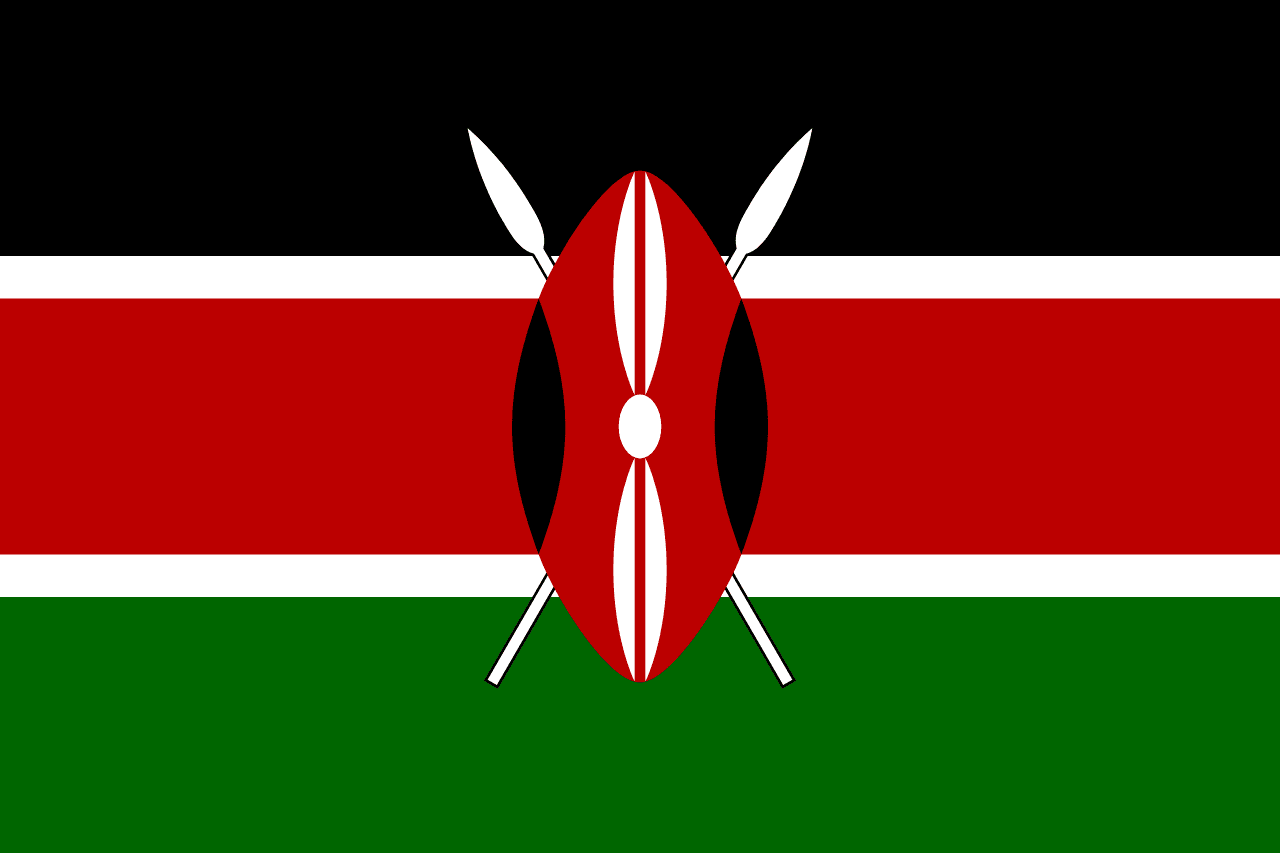
Kenya
Africa
Three horizontal stripes of black, red, and green separated by narrow white stripes, with a traditional Maasai shield and two crossed spears centered on the flag, representing Kenya's struggle for independence and the defense of freedom.
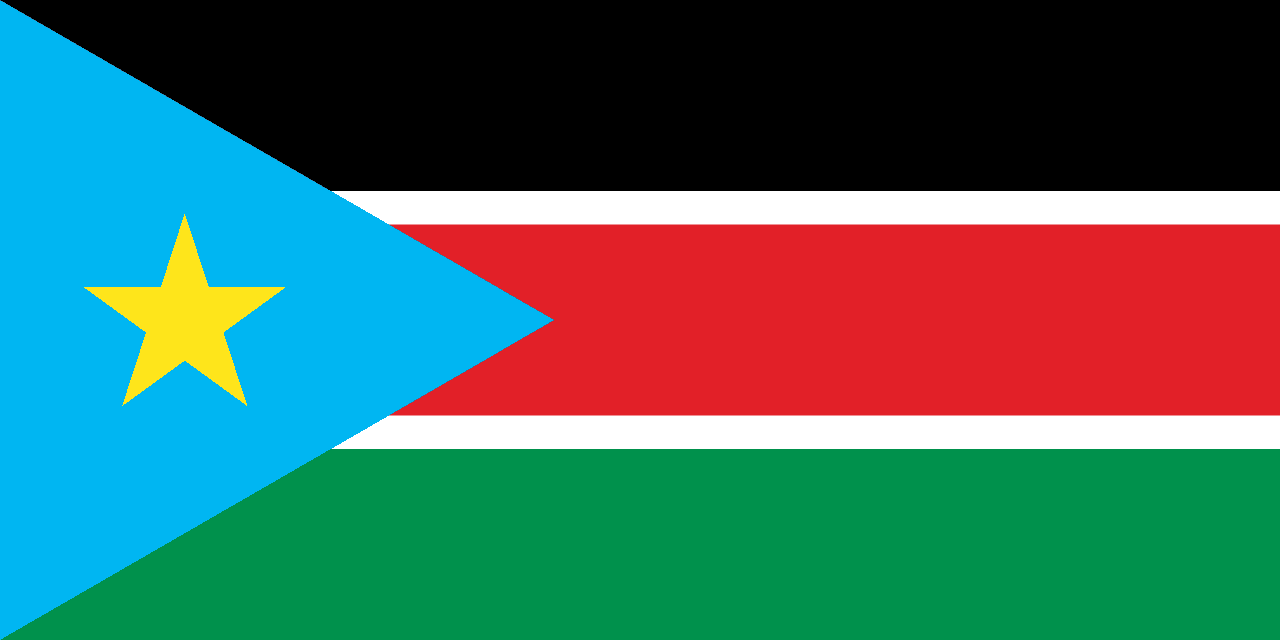
South Sudan
Africa
Three horizontal stripes of black, red, and white with a blue triangle at the hoist containing a yellow star, representing the African people, the blood shed for freedom, peace, the Nile River, and the unity of the states, designed for the world's newest country upon independence in 2011.
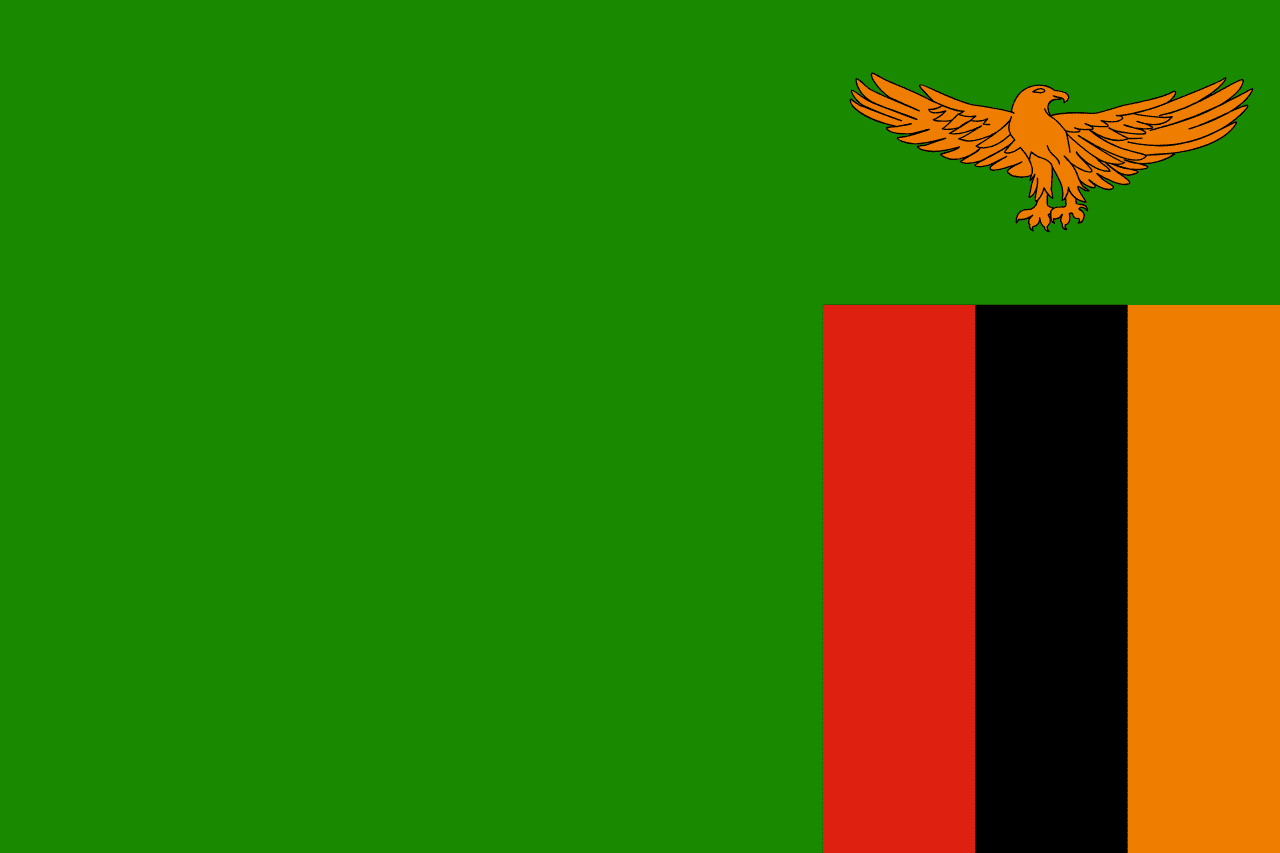
Zambia
Africa
A green field with three vertical stripes of red, black, and orange in the lower right corner and an orange eagle above the stripes, representing the country's natural wealth, the struggle for freedom, the African heritage, the mineral wealth (particularly copper), and the ability to rise above problems.